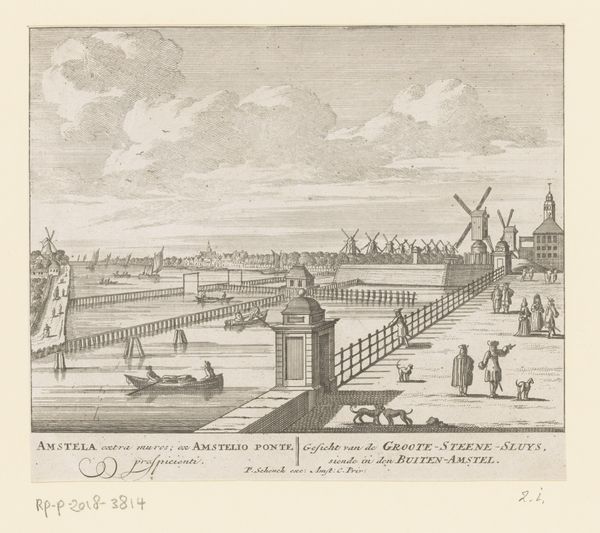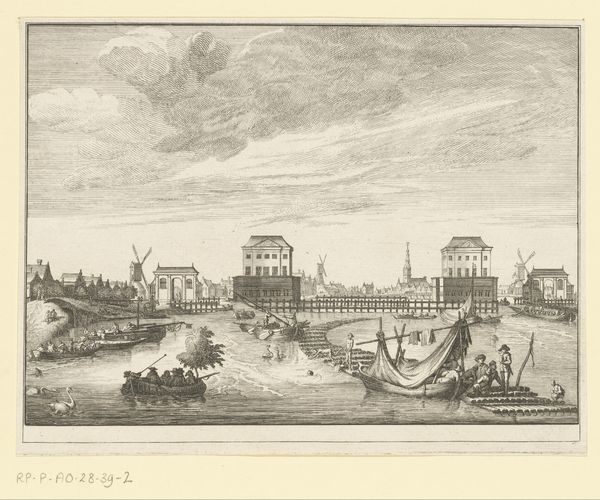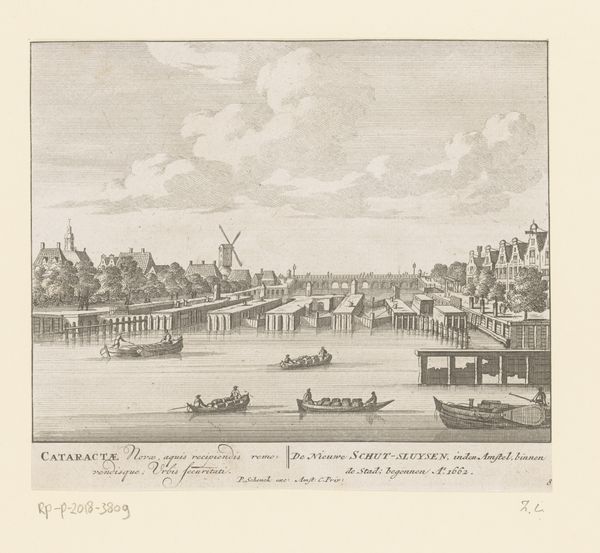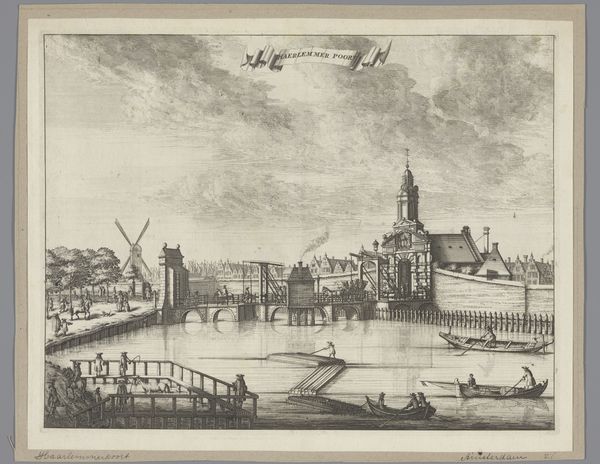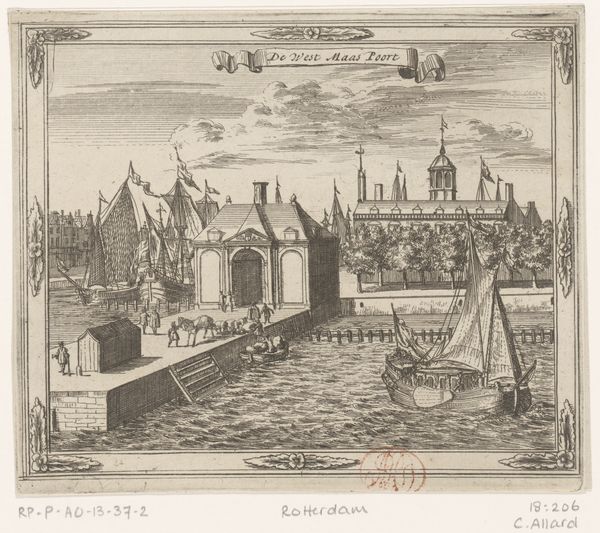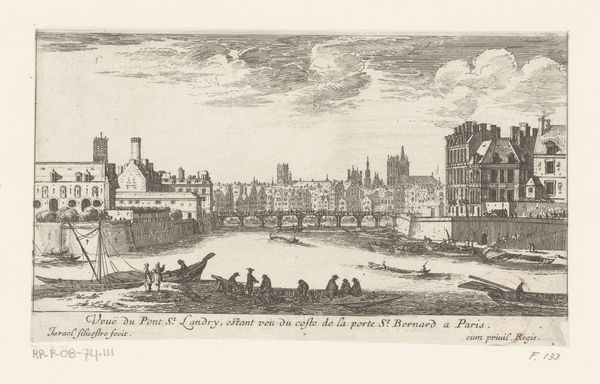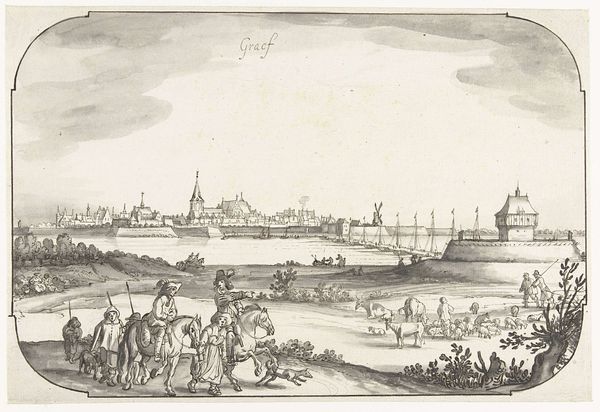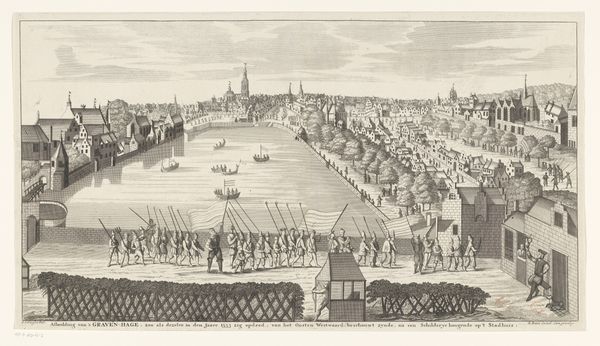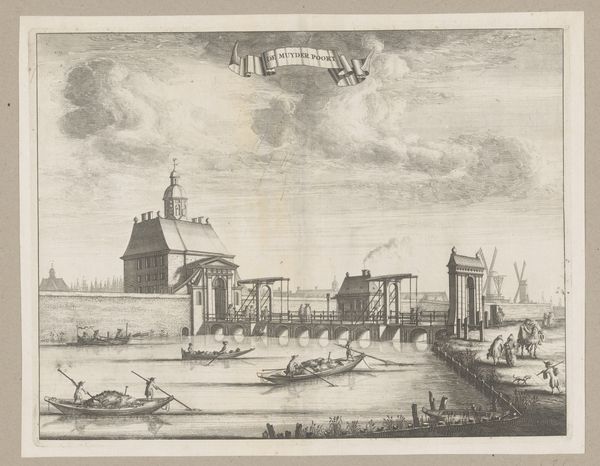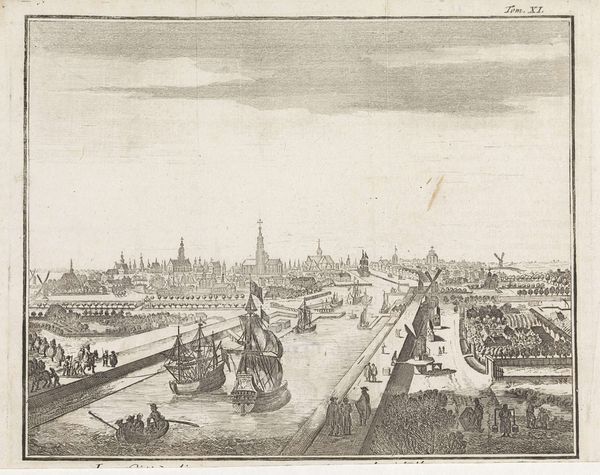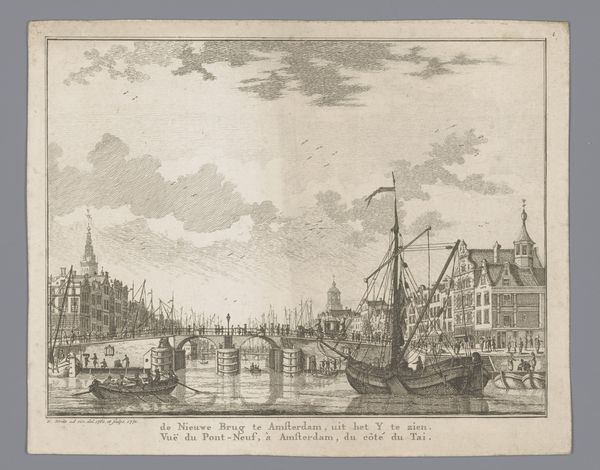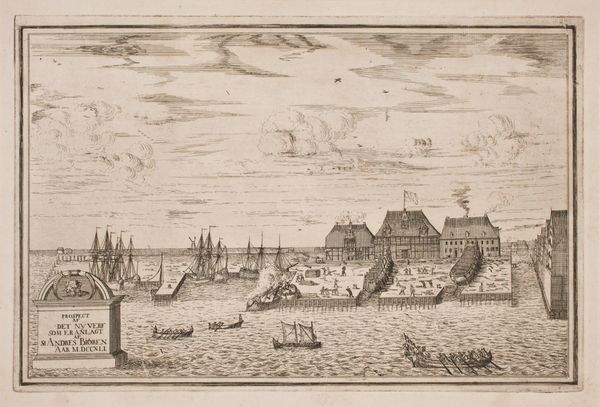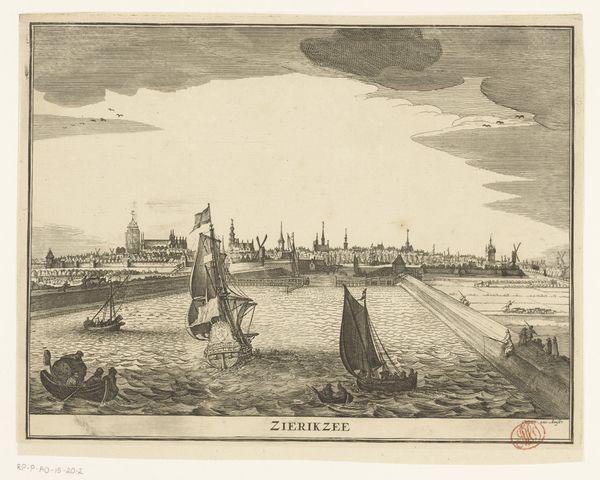
Gezicht op de Hogesluis en de Amstel, met links de Weesperzijde en rechts de Utrechtsepoort 1685 - 1748
0:00
0:00
print, engraving
#
dutch-golden-age
# print
#
pen illustration
#
old engraving style
#
landscape
#
cityscape
#
history-painting
#
engraving
Dimensions: height 155 mm, width 190 mm
Copyright: Rijks Museum: Open Domain
Curator: Before us is a Dutch Golden Age print, "View of the Hogesluis and the Amstel, with the Weesperzijde on the left and the Utrechtsepoort on the right". It dates roughly between 1685 and 1748, created by an anonymous artist. Editor: My first impression is how meticulously detailed it is. All those windmills lined up in the distance! There's a certain tranquility despite the clear articulation of labour and milling, the machinery of everyday life, embedded into the city's character. Curator: Exactly. Considering the period, this print offers a window into Amsterdam's booming trade and expanding city limits. It is about representing Dutch identity in its commercial and innovative achievements, yet also inevitably involves power dynamics related to gender, race and commerce during this time. Editor: I agree, the image points to economic and societal changes, reflected in the craftsmanship too, an early mass-produced form of disseminating information, using metal plates to create this detailed visual document. It reflects on who controlled such tools, labor of the engraver, production of ink, all connected to social mobility. Curator: Right, consider the placement of the Utrechtsepoort, marking a liminal space, where privilege resided inside the gates. The image's portrayal of leisurely dressed gentry enjoying time reinforces such constructs. How labor of various forms and status upheld that class’ lifestyle is important. Editor: I'm drawn to the different types of labour here – those operating the barges, processing flour or even maintaining that long Hogesluis bridge. It shows us that Amsterdam was a carefully constructed and maintained landscape as much as it was a natural one, that bridges facilitated movement but are forms of work. Curator: By recognizing such forms of embodied labour alongside artistic labor that renders that visibility possible, we recognize the broader contributions involved in crafting urban, collective identities through trade routes. Editor: The engraving makes visible what otherwise may have remained unseen regarding production and movement of materials, as well as peoples throughout the expanding landscape that comprised old Amsterdam. Curator: I think seeing how a city understood its identity through trade and its place within complex sociopolitical shifts reveals much. Editor: A single print allows for a surprisingly layered examination into Amsterdam's character, which emphasizes how materials intersect in their production within society.
Comments
No comments
Be the first to comment and join the conversation on the ultimate creative platform.
